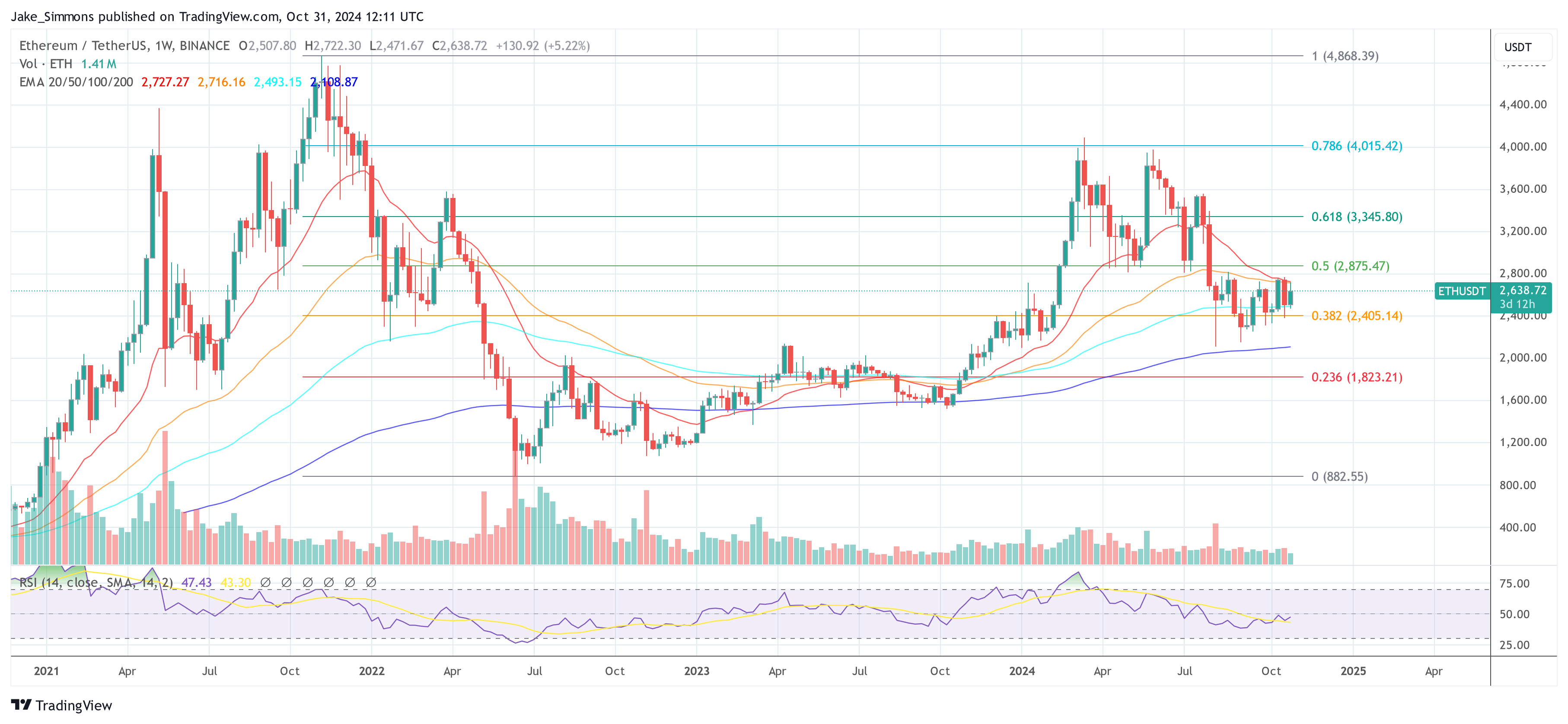This article is also available in Spanish.
Tim Robinson, head of crypto research at BlueYard Capital, has revealed groundbreaking simulations indicating that Ethereum’s implementation of “blobs” could be exceptionally bullish for the long-term price of ETH. In a series of articles on X, Robinson highlighted how blobs could revolutionize Ethereum’s scalability and economic dynamics.
“A lot of people are talking about blobs, but so far no one has simulated how they meet demand…until now,” Robinson said. “TL;DR: Blobs are incredibly bullish on ETH in the long term.”
Why Blobs Are “Insanely Bullish” for Ethereum Price
Blobs, introduced in Ethereum Improvement Proposal (EIP)-4844, are large data structures designed to improve network capacity by efficiently storing and processing data off-chain. This mechanism is essential for Layer 2 (L2) scaling solutions, allowing them to offer lower transaction fees while maintaining security through Ethereum consensus.
Related reading
Robinson’s simulation predicts that Ethereum will operate at 10,000 transactions per second (TPS), burning 6.5% of its total ETH supply per year, with L2 transactions costing an average of $0.06. This scenario involves 16 MB of blobs per block, which matches Ethereum co-founder Vitalik Buterin’s mid-term goals outlined in his latest article “The Surge.”
“Yes, that’s Ethereum running at 10,000 TPS, burning 6.5% per year while L2 transactions cost $0.06 on average, with 16MB blobs per block,” Robinson explained. “You thought the L2s were parasitic and Vitalik didn’t think about it? Ah, sweet summer child, don’t you realize how insane this will become when the Ethereum ecosystem really kicks into high gear.
A key part of Robinson’s research is the rapid escalation of ETH burning as blob usage increases. “It’s interesting to see how quickly blobs go from being free to burning a ton of ETH. It seems that almost everyone does not understand this critical point. This also makes me think that there could be a better pricing mechanism,” he observed.
Robinson provides a simulation tool illustrating the exponential growth in ETH burn rate as TPS increases from the current ~180 TPS to 400 TPS. The data shows that ETH burned increases from around 4 ETH per day to 1,832 ETH per day.
It’s interesting to see how quickly blobs go from being free to burning a ton of ETH. It seems that almost everyone does not understand this critical point. This also makes me think there might be a better pricing mechanism.
This is what it looks like, going from the current ~180TPS to 400TPS pic.twitter.com/fjuK19NL6y
-Tim Robinson (@timjrobinson) October 29, 2024
The scalability potential is further enhanced by the implementation of Peer Data Availability Sampling (PeerDAS), which allows blob capacity to scale based on the number of validators. “Since the total capacity of blobs scales with the total number of validators, once PeerDAS is implemented, blobs can scale as high as needed,” Robinson explained. “There are more than 10,000 nodes to distribute the load between them. While other ecosystems struggle under pressure, Ethereum will provide the world with abundant and cheap block space while being extremely deflationary.
Related reading
An interesting feedback loop identified by Robinson is the inverse relationship between ETH price and burn rate. “Another interesting feedback loop is that the lower the price of ETH, the higher the consumption! As transaction prices decrease, more transactions are made and the burn skyrockets,” he noted. “See how different the burn is with $2,000 ETH versus $10,000 ETH.”
Another interesting feedback loop is that the lower the ETH price, the higher the burn! As transaction prices decrease, more transactions are made and the burn skyrockets. See how different the burn is with $2,000 ETH versus $10,000 ETH: pic.twitter.com/tbSbC6unwM
-Tim Robinson (@timjrobinson) October 29, 2024
Addressing the question of value accumulation for ETH, Robinson said: “So how is ETH going to accumulate value? Being the most useful, rarest deflationary asset, with over 10,000 teams using Ethereum to develop their products, probably will. In the long term, ETH has the best fundamentals in the world; they just need time to play.
The research has generated excitement and discussion within the ETH community. Mat (@materkel) commented: “This will be extremely interesting once we reach blob capacity. I guess many L2s still need to figure out how to handle this business and charge their users correctly. There will be many inefficiencies to correct; we just didn’t really have multiple L2s competing in this scenario before. Once the dust settles, we will have proper price discovery for both charges on L2s and blobs on L1.
Robinson responded, emphasizing the importance of proactive analysis: “Yeah, absolutely! I’m trying to bring in the data so we can work out any issues before we get there. The market becomes more stable with more blobs, but at first the fees could be quite volatile.
At press time, ETH was trading at $2,638.

Featured image created with DALL.E, chart from TradingView.com




